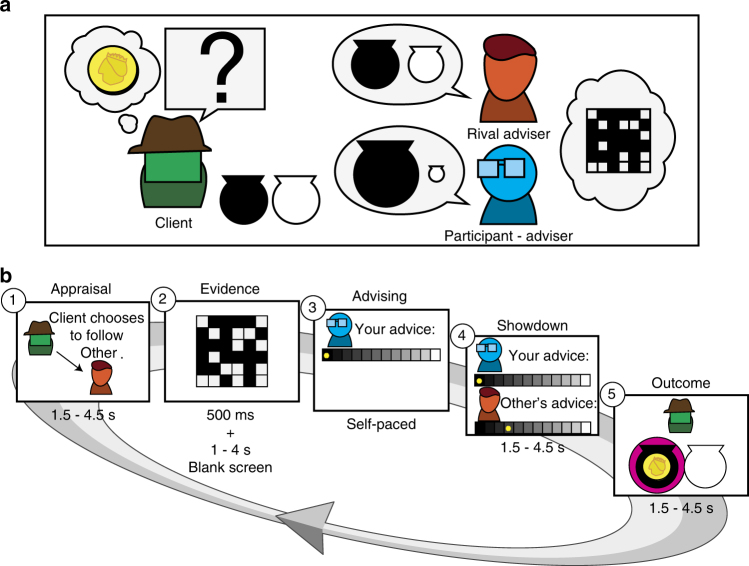Fig. 1.
Experimental design. a Participants were engaged in an advice giving task. In this task, a client is looking for a coin hidden in a black or white urn. He relies on advice from two advisers (the participant (blue) and a computer-generated rival adviser (red)). The advisers, but not the client, have access to information regarding the probability of the coin location. The client considers the advisers’ previous success and current confidence when choosing an adviser to follow on each trial. b Each trial contains five stages. (1) Appraisal: in the beginning of each trial the client chooses the adviser he is going to follow on the commencing trial (and consequently which adviser is ignored). (2) Evidence: the participant (and the rival) then sees a grid of black and white squares, whose ratio represents the probability of the coin being in the black urn. (3) Advising: the participant states his advice on coin location using a 10 levels confidence scale ranging from 'definitely in the black urn' (5B) to 'definitely in the white urn' (5 W). (4) Showdown: both advisers’ opinion is displayed. (5) Outcome: the content of the urn suggested by the selected adviser (magenta circle) is revealed. The next trial starts with appraisal by client based on the history of confidence and success. The stages timings indicated are from the fMRI experiment, where jitter was introduced between stages. See supplementary materials for online and lab stages timings. An interactive demo of the experiment can be viewed at http://www.urihertz.net/AdviserExperiment.html

